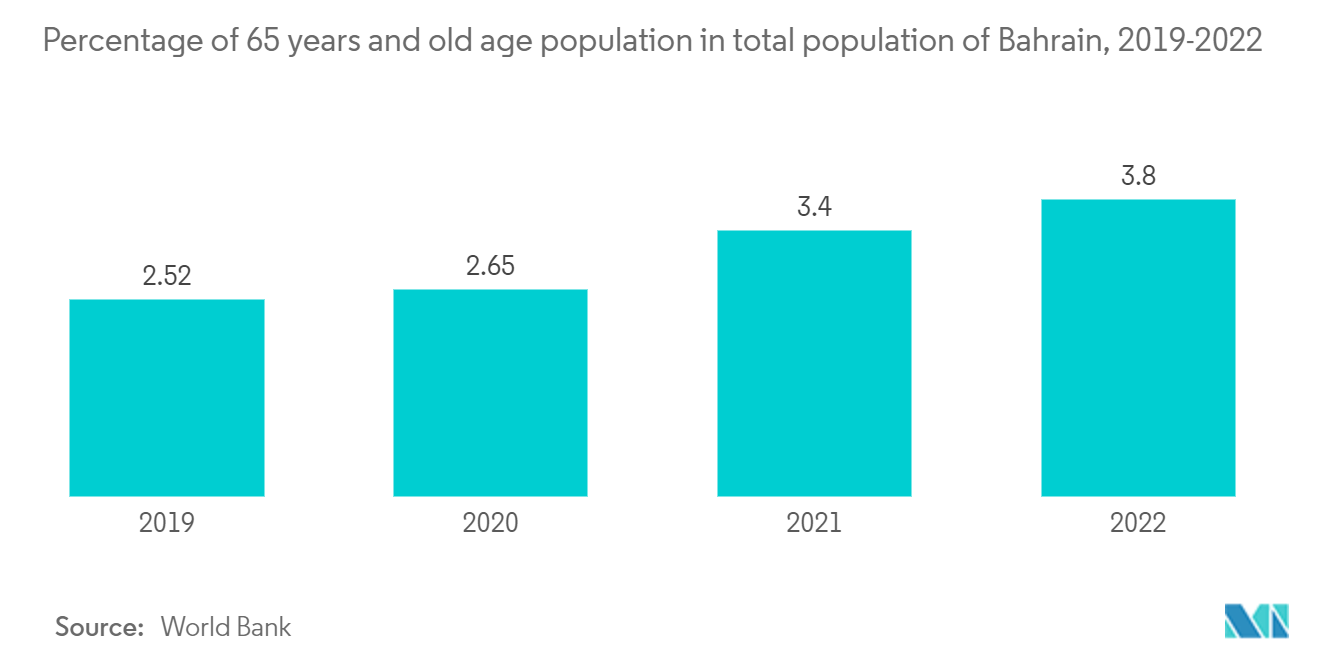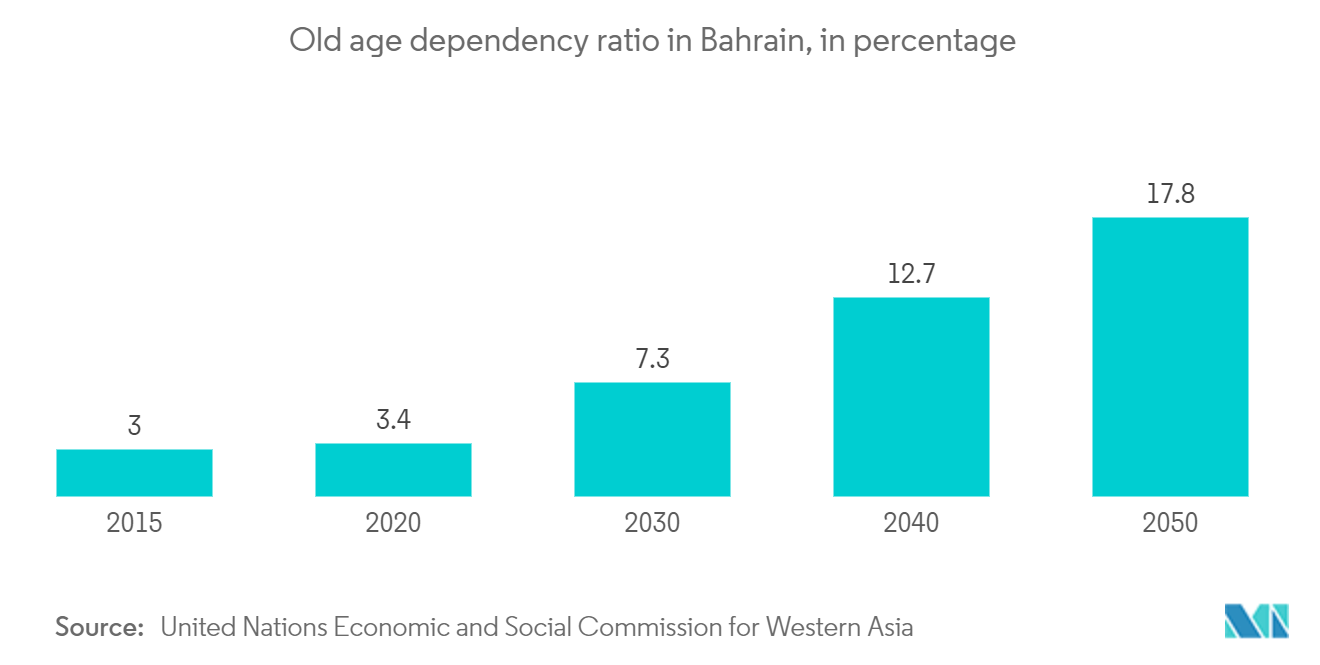Market Trends of Bahrain Senior Living Industry
Increase in Senior Population and Life Expectancy
The population of older persons in GCC countries has been increasing rapidly in the last few decades. As in most developed countries, the Arab region is experiencing significant gains in life expectancy at age 60. As life expectancy increases, quality of life and health issues become a growing concern for older persons.
Increasing population growth and rapid urbanization put tremendous pressure on Bahrain's Senior housing supply, which had already been witnessing a shortage in affordable housing. Following a 2020 slump amid the COVID-19 pandemic, residential rents and senior housing prices in the region would likely pick up, in line with anticipated increasing housing demand in 2022. The existing demand-supply gap in the housing sector indicates room for improvement and further action in the form of senior housing policies and subsidies. In 2022, Bahrain's population increased by approximately 3.8% compared to the previous year.

Increase in old age dependency ratio
In all GCC countries, the proportions of older persons slightly declined from 1970 to 2015 (except in Bahrain, where the proportion stayed the same). Over the period 2015-2050, countries that will likely experience the fastest growth in the population of older persons are (in ascending order of growth): Saudi Arabia, Bahrain, Kuwait, Oman, Qatar, and the United Arab Emirates, with rates ranging from 5.2% to 7.5%. Countries with high positive net migration rates, caused mainly by labor migration, had small total dependency ratios, namely Bahrain, Kuwait, Oman, Qatar, and the United Arab Emirates.
While people are living longer, older persons are not necessarily in good health. In general, women in Bahrain live longer than men, but they experience poorer health conditions in old age. Poor health results in high medical expenses that older persons and their families must bear, if they are not covered by social security programs. In Bahrain, individuals without medical insurance have to pay out-of-pocket for treatment.
In the Arab region, formal old-age assistance is available primarily through ministries of social affairs, the United Nations Relief and Work Agency (UNRWA), and aid programs funded principally by the European Union and the World Bank. However, those programs are limited in scope and depend entirely on foreign donors, and therefore cannot guarantee beneficiaries a regular income or sustainable payments. In GCC countries, except Qatar, foreign workers are also not permitted to remain in the country once they reach retirement age, thus denying them pension coverage. According to forecasts, the old-age dependency ratio in Bahrain will be 17.8% by 2050.

